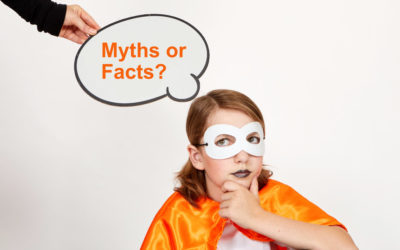Hardly anything is as crucial for the success of an article as the headline or title of a social post. But how do you write headlines that make people click? The 11 best tips for “must-click” headlines, based on study results, expert opinions and our own experience.
The tips at a glance
- Take a good pinch of surprise
- Do not be sparing with curiosity in the headline
- Mix in powerful signal words
- Intersperse SEO-relevant keywords
- Subsetting one or other number
- Add a question
- allow emotions to flow
- Add a portion of tips and tricks
- Mixing in the negatives
- Add a playful note
- Last but not least: Do not forget customer wishes
There is no question that the headline is crucial for the success of an article or social post. Nor is there any doubt that many journalists, advertisers and marketers fail at this hurdle. This was already preached by the advertising guru David Ogilvy:
“On average, five times more people read the title of an article than read the actual text.”
David Ogilvy
To an even greater extent, this insight applies to social networks. With paid posts you can boost the impressions, but with the wrong headline the impressions will not convert to visits. The result is a catastrophic CTR. So to avoid disappearing unread like the majority of articles, every headline needs a few ingredients that add spice, trigger engagement and increase visits. Various analyses of successful, highly viral headlines have identified the following eleven recipes for success:
1. Take a good pinch of surprise
The unexpected attracts attention, because surprising turns have a stimulating effect on our brain cells. This effect can also be transferred to headlines. Examples would be “Write 10 brilliant articles – with just one idea” or “The 10 biggest marketing mistakes – four of them are guaranteed to be made by you! Content that surprises users is not only clicked on more often, but is also better remembered and, last but not least, more likely to be shared, as a study by the agency Frac.tl shows.
2. Not be sparing with curiosity in the headline
Similarly, formulations suggesting that the secrets of experts should be revealed. Examples are “The secret to getting a blog hit every day”, “10 lucrative content strategies only professionals know”, “10 little-known strategies to increase ROI with content” or “What everyone should know about successful social media marketing”.
Last but not least, these headlines represent a kind of challenge for the reader: Do you have the information that every good marketer should have? Are they on top or rather part of the big crowd? The inherent curiosity to find out is a central click incentive – as well as the bonus of getting a quick answer to one’s own pressing questions.
3. Mix in powerful signal words
“A single word can change everything”
Blogger Kevan Lee arrives at this conclusion after conducting numerous A/B tests on headlines. Research such as the “Language and Memory” study by Elizabeth Loftus and John Palmer also shows that adding or modifying a single word can completely change the meaning of a statement and thus the reactions to it. But what are these words that our neuronal cells respond to in such a way? Which words tempt us to click and which ones make us dismiss an article as uninteresting in a matter of seconds?
Research shows that decisions like these are made in the so-called old brain. This part of the brain is the most “primitive” and is mainly concerned with survival strategies, explain the scientists Patrick Renvoise and Christopher Morin in their book “Neuromarketing”. This is why the old brain reacts mainly to direct, simple and visual address. For marketers, this means avoiding foreign words and complex sentence structures and instead using simple, easily accessible and descriptive terms.
David Ogilvy already propagated that simple words that express urgency and appeal to the senses attract special attention. In 1963 he published a list of the 20 most powerful words, many of which are still relevant today.
4. Intersperse SEO-relevant keywords
For a good Google ranking, relevant keywords should be included in the headline whenever possible. Tools like Google Adwords or Übersuggest track down the most frequently requested keywords. In the headline these terms should be placed as far forward as possible – and of course they should also be found in the actual text. However, readability should always take precedence over SEO tactics. Illegible headlines overloaded with keywords do not arouse click incentives in any user and such “keyword stuffing” is punished not least by Google.
An example of a simple, SEO-compliant headline would be
“5 content strategies (keyword) that boost your traffic”
5. Subset one or two numbers
The previous example sentences have already hinted at it: Numbers are the non-plus-ultra when it comes to headings that are more attractive to click on. Our A/B tests with native ads show that headlines that receive a number achieve a CTR that is more than twice as high. The study of the online service CoSchedule confirms our experience. It found that posts that list something numerically account for eleven percent of the most frequently shared blog articles. This puts them in first place among the types of posts that are clicked on and recommended most often.
The popularity of lists is mainly due to the fact that they show at a glance what the reader can expect in the post, they give the text a clear structure and also satisfy the need for quick answers. A curious finding in this context: a study by the content discovery platform Outbrain found that headings containing an odd number achieved a 20 percent higher click-through rate than headings containing even numbers.
Example of a list heading:
“11 tips on how to write a dozen blog posts every week – without sacrificing your free time”
6. Add a question
Headlines that ask a question have a higher click rate than headlines that end with an exclamation mark or dot. This was also the result of Outbrain’s research. Questions stimulate speculation about possible answers and thus arouse the curiosity of the reader. A headline, on the other hand, which already reveals the core message of the content, hardly provides any click incentives.
Thus, the headline “Do you follow the wrong content strategy like 90% of marketers?” is likely to generate more clicks than the simple statement “90% of marketers follow the wrong content strategy”. Another advantage of the first variant is the direct approach, see ingredient 11.
However, British technology journalist Ian Betteridge points out that a headline should not contain questions that can be answered with “no”. Formulations such as “Can marketing professionals do without content marketing?” often suggested a trivial answer or pointed to an inflated story. It is better to reformulate the question into a precise and clear statement: “5 reasons why no marketing professional should be allowed to do without content marketing” or, to put it in a nutshell, to the practical aspect of the question: “5 tactics for how marketing professionals can increase sales with content marketing”.
7. Allow emotions to flow in
Content that evokes emotions generates more attention and is shared more often than emotionally neutral content. Numerous studies indicate this. The analysis by CoSchedule founder Garrett Moon also reveals that emotions can be decisive for the success of a headline. With the help of the free Headline Analyzer Tool from the Advanced Marketing Institute, he determined the emotional value of headlines that are frequently and little shared, measured by the number of emotionally significant terms in the headline. These include pronouns that address the reader directly or words that signal the need for action.
The result: Viral posts with more than 1000 clicks generally achieved an emotional value of 30 or higher; posts that received only a few clicks achieved an emotional value of less than 20. Moon concludes that the emotional value could be a good indicator of the possible virality of a post and recommends that a value of 30+ be aimed at in order to “increase the chances of a viral post.
Moon’s examples of a low and highly emotional headline:
“Tax Tips for the Second Half of the Year” (emotional value: 0%)
“Things you should do right now to prepare for the upcoming tax season” (emotional value: 45%)
8. Add a portion of tips and tricks
Do-it-yourself is a trend – and not only in terms of fashion. The “Do it yourself” philosophy extends to almost all areas of everyday life, including working life. Those who teach their customers how to master their own challenges distinguish themselves as experts and are sure to have their interest at heart. Phrases such as “Learn how …” or “How to (do)” are excellent bait to attract the learning-joyful, independent audience.
Example from the practice:
“How to collect 100,000 email addresses in one week”
9. Mix in the negatives
The web seems to be full of superlatives like “The best tips”, “The most successful tricks” and “The greatest cat videos”. In order to stand out from the competition, it can therefore make sense to rely on negative formulations. Terms like “never”, “avoid” or “the worst” are equivalent to a red signal colour and attract attention by their warning character. However, just like superlatives, negative formulations should be used sparingly in order not to risk a “wear-out” effect.
Example of a negatively formulated headline:
“10 well-meant marketing tips you should never follow”
10. Add a playful note
“Yes, we scan” – With these three little words the Bild-Zeitung expressed the general outrage about the NSA spying affair and secured the title “Headline of the year 2013”. The play on words, which satirises Barack Obama’s election slogan, shows how effective the creative use of language can be.
Whether it’s shaking rhymes, as the magazine of the Süddeutsche Zeitung publishes in its cult section “Gemischtes Doppel” (Mixed doubles), hyphenators and homonyms, as can be read in the news ticker of the satirical magazine “Der Postillon”, or the caricature of idioms à la Bild: puns captivate through originality and thus arouse the desire to read the article.
11. Last but not least: do not forget customer wishes
Nothing appeals to us as much as our own name: Neurological studies show that hearing one’s own name triggers unique brain activities – when we hear our first name, we are more attentive, more involved and have greater confidence in the message. This finding could be particularly beneficial for personalized email marketing.
In blog posts and social media posts a personalized form of address is hardly possible, but here too a direct address is of great importance. Personal pronouns such as “you” and “you” establish an immediate connection between author and reader and help to build trust. According to blogger Brian Clark, “You” is even the most powerful word in the English language when it comes to writing stimulating blog content.
One thing is clear: the focus of the content should always be on the needs and questions of the readers, not on your own company. Only then are users willing to engage with branded content and perceive it as a guide. And this customer-centric approach should be reflected not least in the language. Because contrary to many claims, even in the age of content marketing, the content king is never the content king – the true king is and remains the customer.




